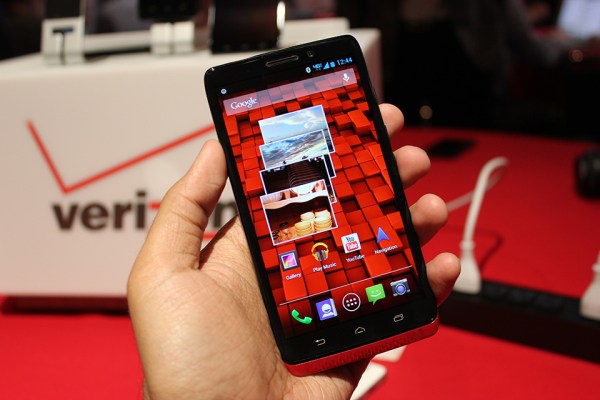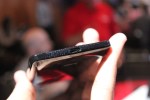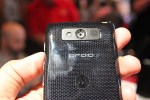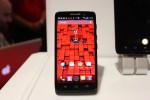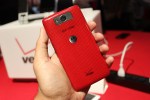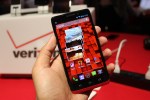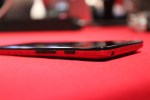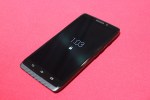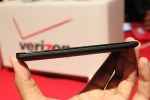As you may have heard, Verizon unwrapped three new Motorola Droid smartphones in New York earlier today, and to my surprise, they just may be the Droids you’re looking for. Well, some of them, anyway. Fair warning, friends: any of you expecting dramatic differences between the three of these things are going to disappointed, so we may as well start with what these new Droids have in common.
Motorola’s on-site representatives said the three new Droids were “very similar” in terms of power, and that’s the impression I got after fiddling with them a bit. These days you would expect a flagship smartphone to feature a KICKIN’ RAD quad-core CPU like those seen in the Samsung Galaxy S4 and the HTC One, but that’s not the case here.
Motorola may talk up its X8 computing platform (more on that later) and its eight cores, but much of the processing power comes from a pair of CPU cores. Even so, firing up apps, cruising around on the web, watching YouTube videos, and punching out faux text messages was very smooth, and there was hardly any discernible difference between them. Expect some more stringent tests once we get our review units in.
Thankfully, these new Droids are running a version of Android 4.2.2 that’s awfully close to stock. Motorola’s been decluttering for years now — remember the hot mess that was MotoBlur? — and they’ve trimmed a lot of the fat that didn’t actually add much value. Of course, there are more than a few things here that stock Android devices can’t do, and it’s thanks to Motorola’s new X8 system.
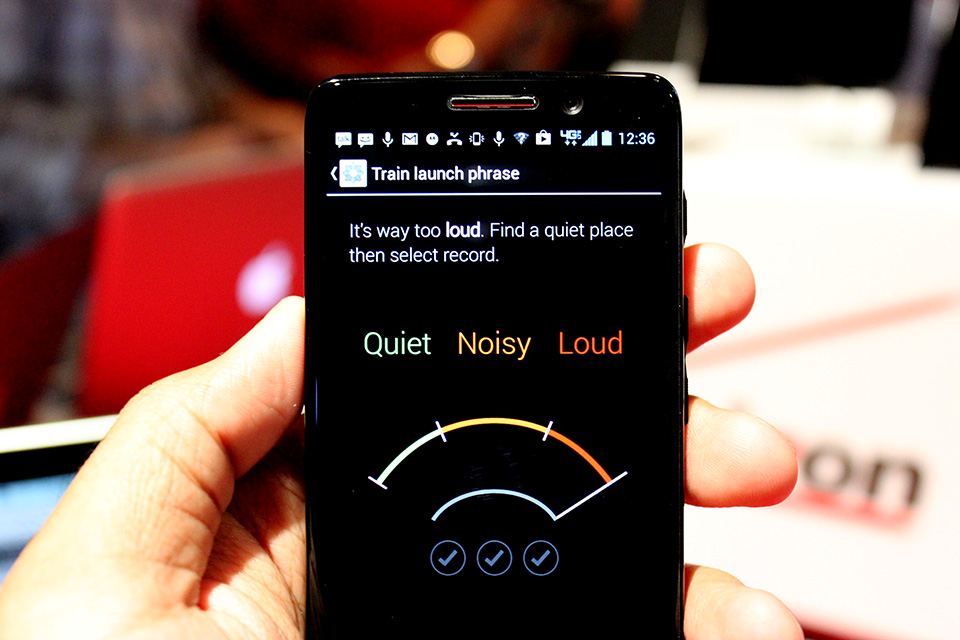
The multi-core X8 system lets the Droids do some neat new things — you can ask your phone to call people, pull up directions, and the like by issuing it an “OK Google Now” command. It works reasonably well, though considering how damned loud the room was, I wouldn’t be shocked to learn it’s actually more accurate than what I saw today.
Curious aside: you’re not supposed to be able to activate those touchless controls unless you’re the person who configured them in the first place, but I was able to bring them up on a spokesperson’s device without any setup on my part. Maybe it’s because it was very loud in that crowded room, but a spokesperson didn’t seem too pleased.
You’re also able to activate the camera by giving the phone two quick shakes, but it didn’t seem as straightforward to me as it could’ve been. Tentative flicks don’t seem to do the job, you really need to dial up the wrist action to get the motion to register since the phone tries to ignore movement when it’s in pockets or bags.
I got shot down when I asked if the X8 system would appear in other Motorola devices (since it already seems to be in the Moto X), with a representative dryly noting that the company has invested a lot in the platform… and subtly implying that work would be a waste if it didn’t appear elsewhere. Frankly, considering the near one-to-one correlation between the features seen today and that leaked Canadian video from a last week, it’s near-impossible to think that the Moto X doesn’t have the same setup nestled inside it.
But that’s enough about similarities — let’s talk design for a moment.
First up is the Droid Mini, the smallest of the bunch. I was a bit of a sucker for the RAZR M, Motorola’s original pint-sized Droid — the package was quite handsome with its nearly edge-to-edge display and its tiny frame, but was it was no top-tier device when it came to performance. Motorola thankfully didn’t repeat its earlier mistake, as the Mini seems awfully snappy. Colors on the 4.3-inch OLED display running at 720p were bright without being lurid, and it’s a nice, dense little thing to hold on to. It’s not perfect though — the glossy Kevlar finish that Motorola ran with feels a little off-putting and picks up fingerprints like crazy, a trait it sadly shares with its flagship brother.
Speaking of the flagship, Motorola apparently focused on making it very thin, and they succeeded — it’s a scant 7.11mm thick, and sports a 5-inch 720p OLED screen. Fortunately, the Ultra has some nice heft to it, which helps give the whole package a more premium feel compared to other top-tier smartphones (I’m looking at you Galaxy S4).
To be quite honest, the Ultra is the hardest of the three to write about. Motorola seemed to make the Ultra the foundation that the other two Droids work off of — the Mini is the more pocketable Ultra, and the Maxx is the Ultra with a much better battery — and because of that the Ultra wound up being the least interesting of the three.
The most impressive device I mucked around with today was the DROID Maxx, for perhaps obvious reasons. Back in the day, the Maxx was always the chunky, more utilitarian version of whatever slim smartphone Motorola was touting at the time. Now it’s gotten to the point where it’s just not much larger than any other hot-selling smartphone out there. It’s great that the Ultra is so slim, but the Maxx is so much less of a lump than it used to be that it’s actually a little surprising.
Let’s put that in perspective a bit — my iPhone 5 usually lives inside a very slim case (this one, if you care), and it fits in my pocket as well as you would expect. The Maxx, with its ridiculous 3,300mAh battery, is just about as thick as that iPhone.
Yes, it may seem like a minor thing to get worked up over, but think about it. Companies like HTC and Samsung and Sony like to push the envelope in terms of raw computing power and graphical performance, and one could argue that they’re just trying to give some consumers what they want. But where’s the value in that for the companies who make the devices? It’s mostly in marketing. You get to crow about having the world’s [insert superlative here] phone for a few months until someone else one-ups you. But batteries are different — if smartphone companies started duking it out on battery life instead of screaming clock speeds all the time, we’d finally start getting phones that can keep up with all the seriously crazy things we ask of them.
